By Dan Weisz
Costa’s Hummingbirds are just one of many hummingbird species we have in the Sonoran Desert. In Tucson, Broad-billed and Anna’s and Black-chinned are the other common species. I have a few resident Costa’s at my house year-round. One recent overcast afternoon, I decided to sit out on the porch and watch one of ‘my’ Costa’s. Male Costa’s Hummingbirds will have a few favorite perches that they will sit on to monitor and defend their territory and food sources. In this case, he was watching the feeders on my back porch. All of the photos in this email show the bird perched in the exact same spot and looking around. He’s a good looking little bird.
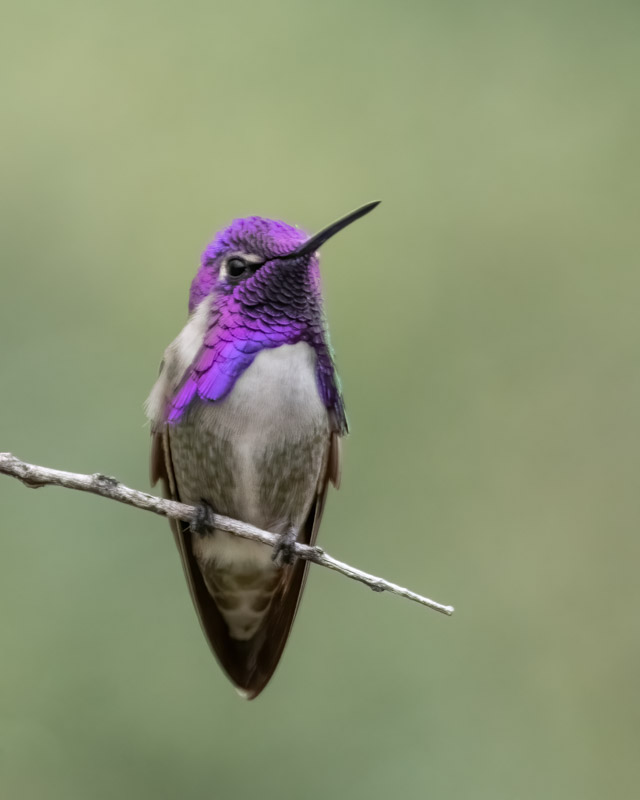
The male’s special neck feathers are called his “gorget”. Birdnote does a great job of telling how this feature got its name and how it has such a stunning color. Different species of hummingbirds have differing colors and shapes of gorgets: https://www.birdnote.org/listen/shows/why-gorget-glitters
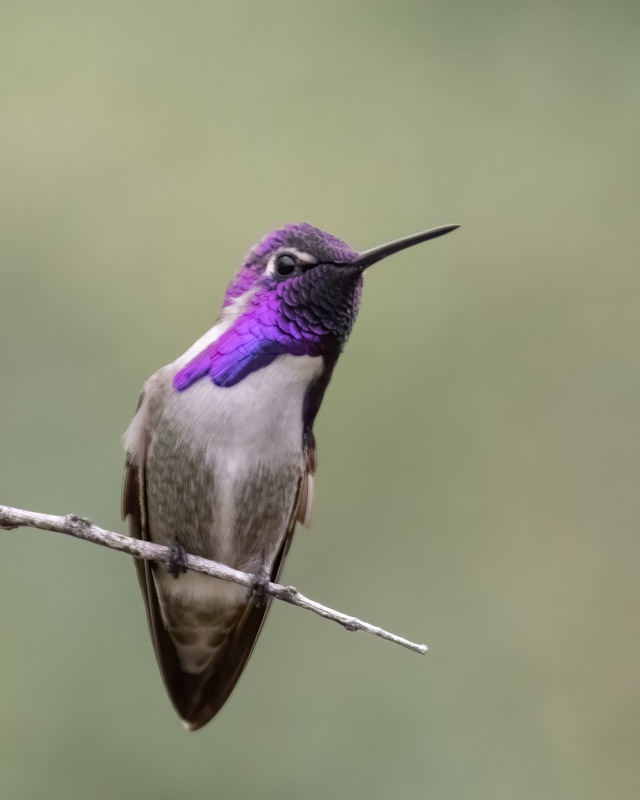
The shape of a Costa’s Hummingbird gorget is fairly distinctive. It looks like a very long mustache and the purple gorget and head feathers give this bird a very unique look.
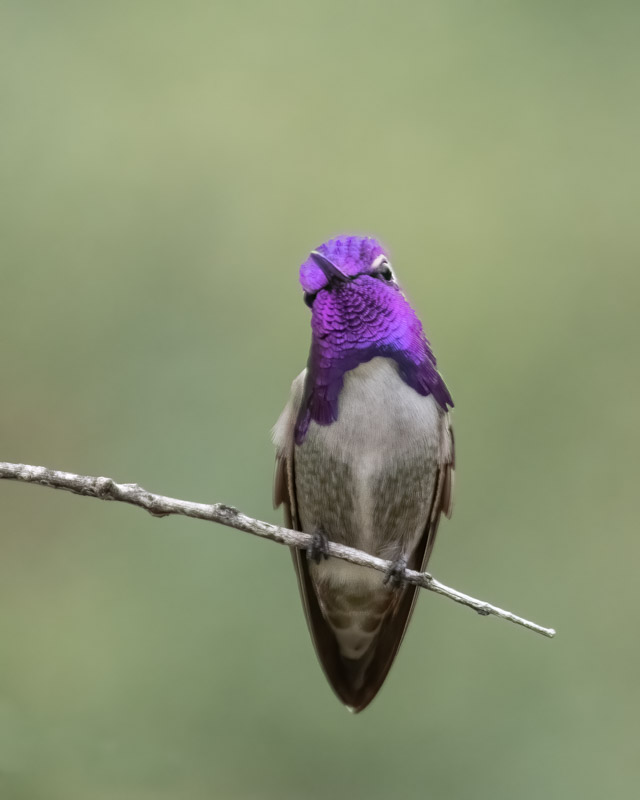
Costa’s Hummingbirds are true southwestern birds. We have them in the Sonoran Desert and they are also present in the Mojave Desert and along some nearby coastlines.
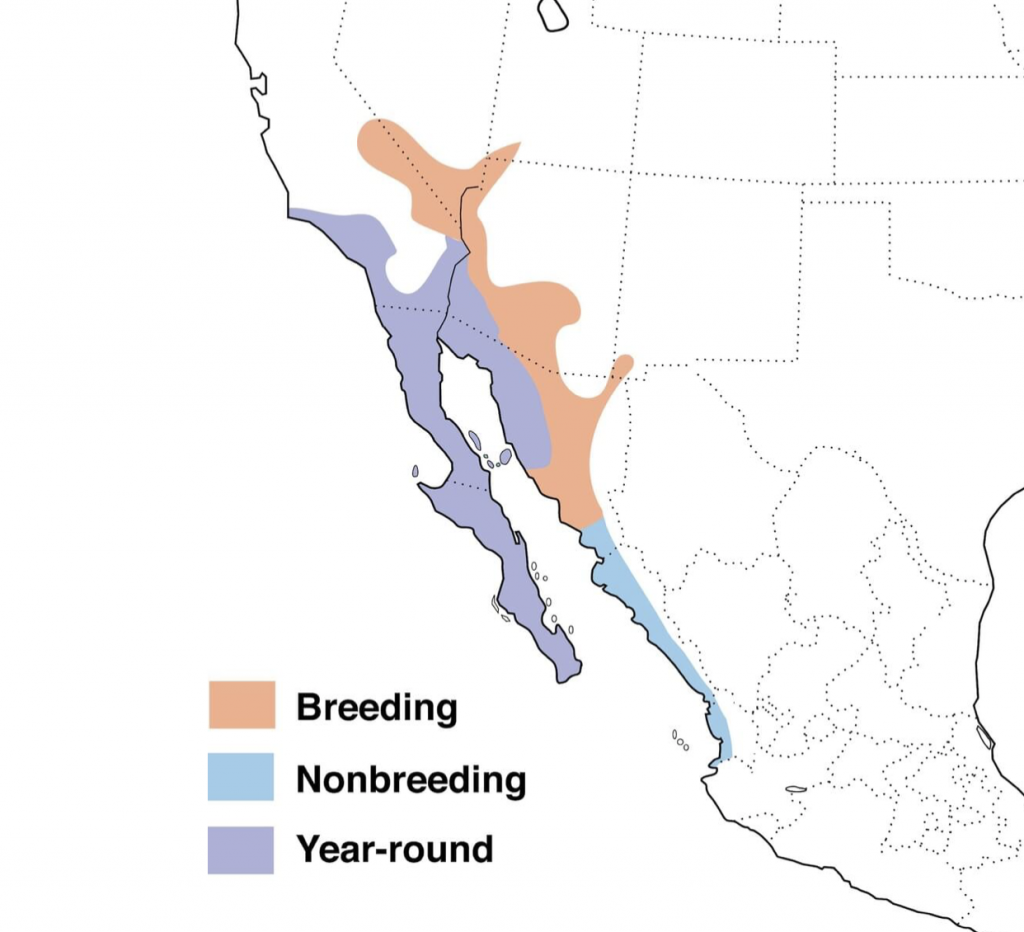
Costa’s Hummingbirds are very small hummingbirds. They often appear to be hunched over and, with their compact body, can even look like they have a tiny plump belly. If you rest a penny in your palm, you will know how heavy a Costa’s hummingbird is. They weigh between 2-3 grams!
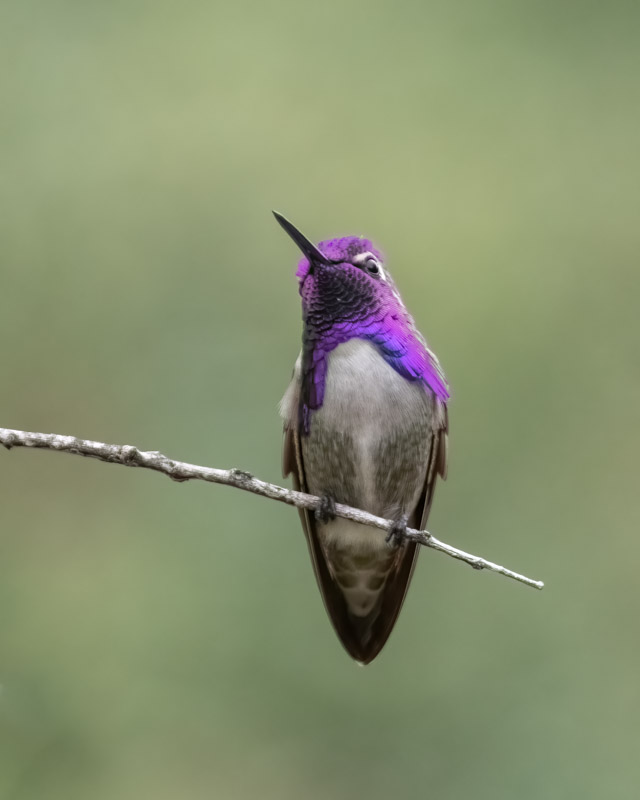
While we often see hummingbirds flying around, one study on Costa’s showed that they only spent about ten minutes per hour feeding. Most of the rest of each hour the birds spent perched just like this bird and just looking around. Another study showed Costa’s to be perched between 63% – 93% of the time. The rest of the time they are either feeding or chasing of other hummingbirds who dare come close to “their” nectar source.
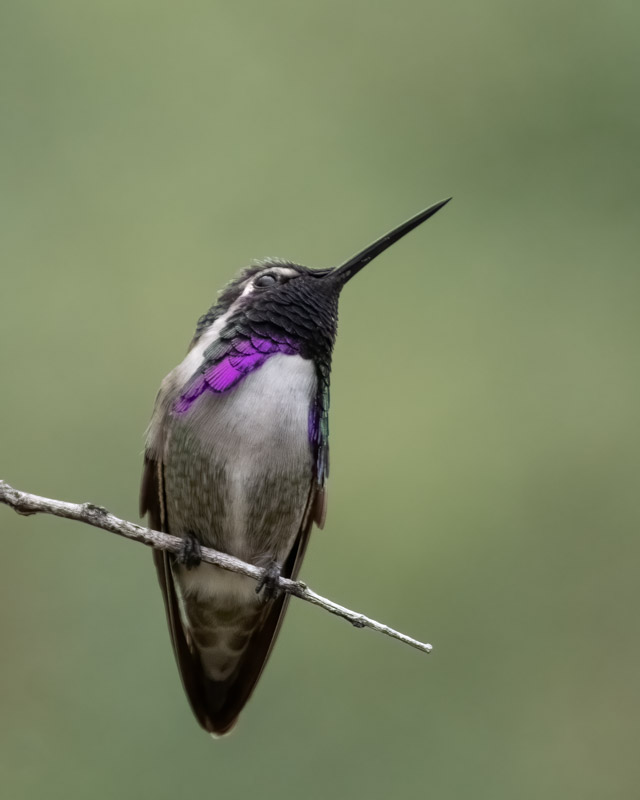
As little as a Costa’s Hummingbird weighs, it loses about 15% of its body mass overnight. Once daybreak happens, the bird needs to begin foraging immediately for food. We know that hummingbirds feed on flower nectar, but they also eat little bugs which make a great source of protein.
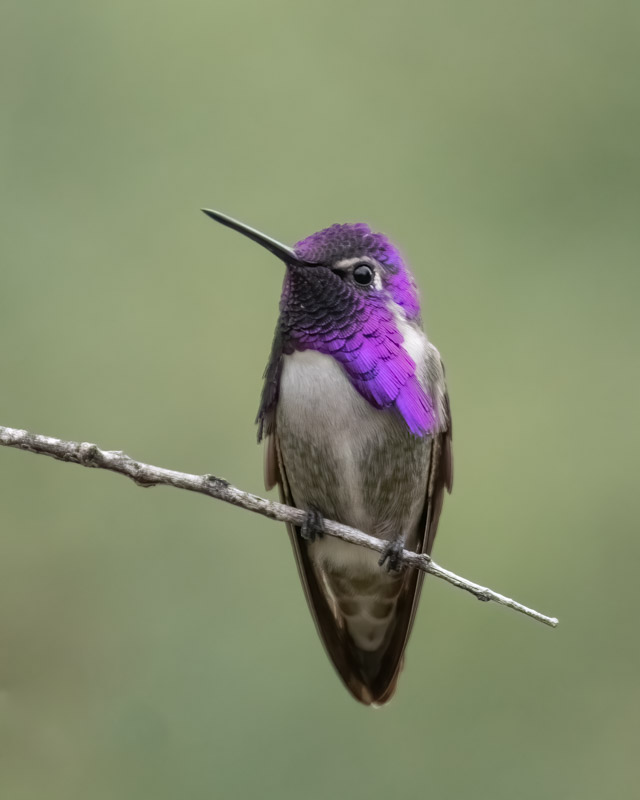
Each of my photos show the bird in a slightly different position. It was just too difficult for me to choose my favorites so you are getting to see many different portraits of this bird taken over a relatively short period of time.
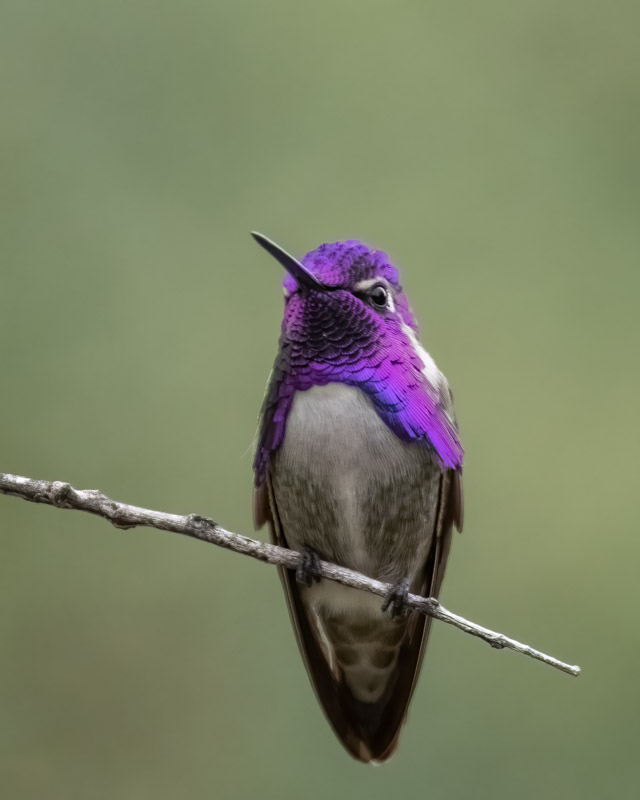
A young male Costa’s Hummingbird will not have this purple gorget when it leaves the nest. It takes a year for the male to develop its purple gorget as it grows and molts its juvenile feathers. After that, the male will continue to molt all of its feathers annually, keeping the gorget and all other feathers looking good and in the best shape for flight.
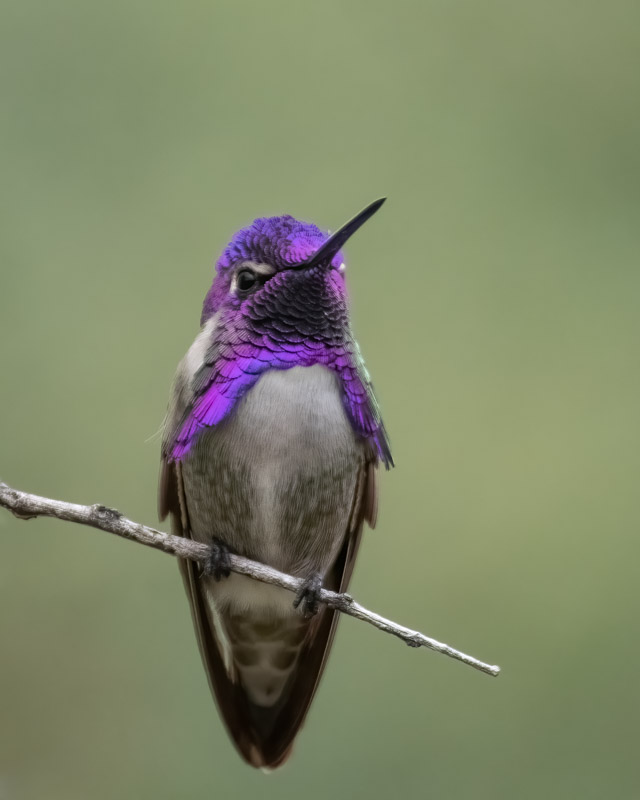
I took all of these photos on an overcast day because I knew that the clouds would filter the sunlight, allowing the gorget to glow much more than on a sunny day. On a bright sunny day, the gorget will mostly remain black until the light hits it just right, and then the entire gorget will glow brilliantly. For a photographer, the colors then are so bright they will look ‘blown out’ in the photograph and will not show well. The clouds provide the perfect filter to show off the feathers well.
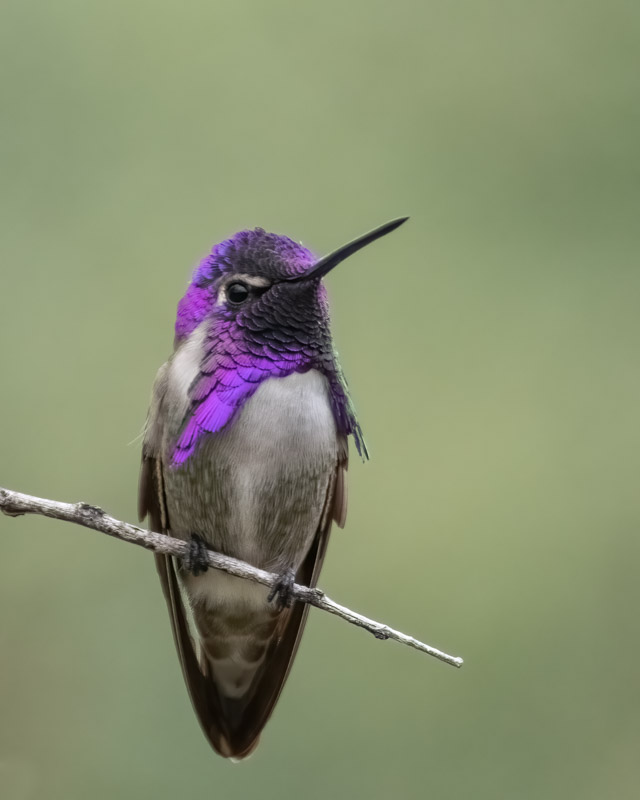
During the molt, the gorget may not be as long on the sides, but once all of the feathers fill in, the gorget reaches its distinctive length. As you heard in the Birdnote piece, the colors of the gorget vary based on the angle of the bird’s feathers to the sunlight. In some of the photos one part of the feathers may look black, but those same feathers, when the bird is turned differently, flash that brilliant purple. At other angles, the gorget feathers show their actual color- black!
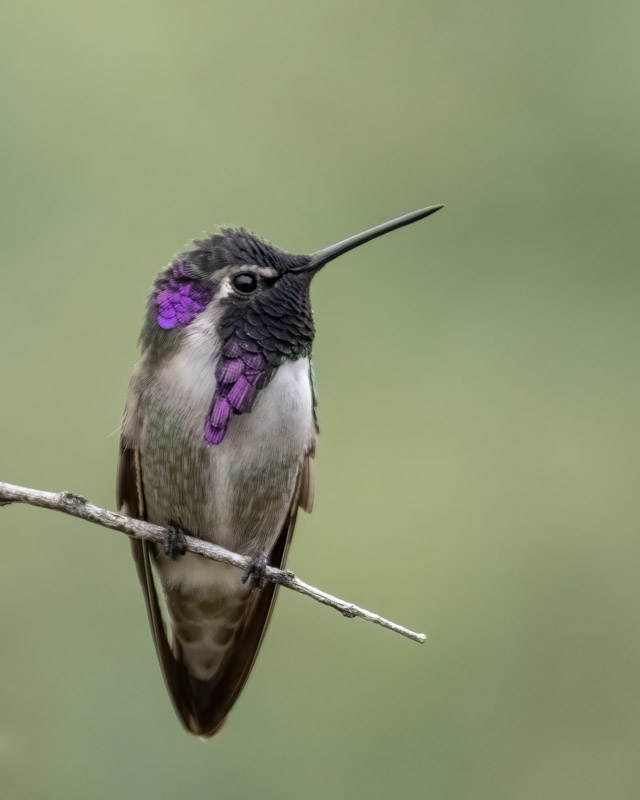
After flying off several times and landing on the exact same spot on the branch, the Costa’s finally landed with its back to me. I caught him right as he was landing and settling down. With his back to me, I took that as a sign he no longer wanted to show his face although after close to an hour, I think I was ready to head inside anyway.
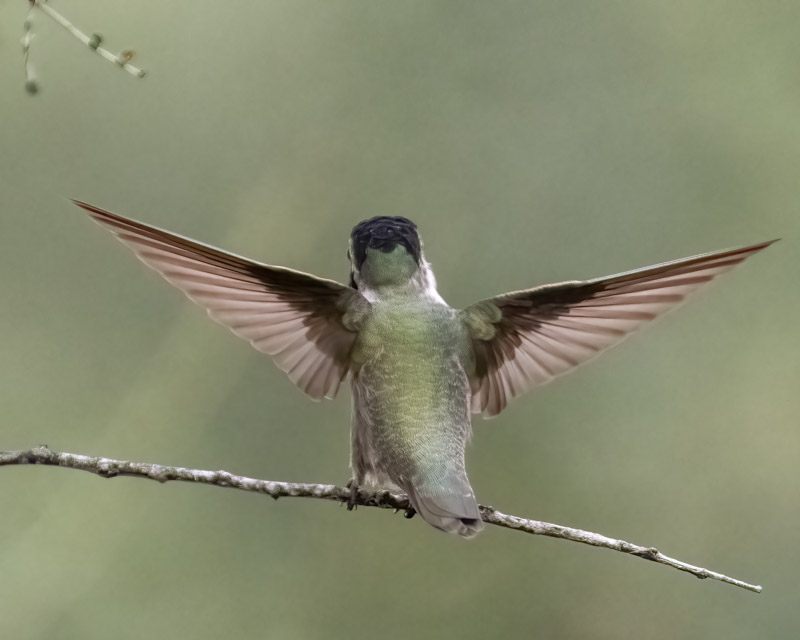
I enjoy seeing this hummingbird and his other Costa friends throughout the year.
